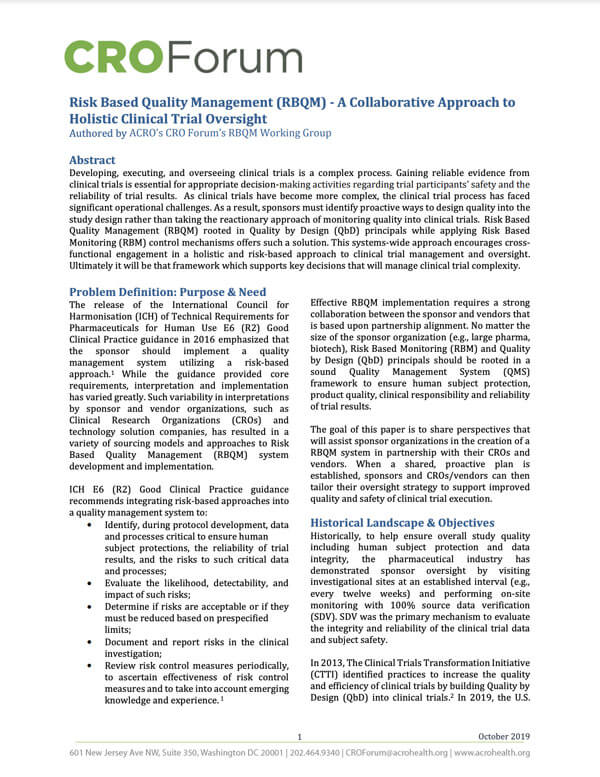Developing, executing, and overseeing clinical trials is a complex process. Gaining reliable evidence from clinical trials is essential for appropriate decision-making activities regarding trial participants’ safety and the reliability of trial results. As clinical trials have become more complex, the clinical trial process has faced significant operational challenges. As a result, sponsors must identify proactive ways to design quality into the study design rather than taking the reactionary approach of monitoring quality into clinical trials. Risk Based Quality Management (RBQM) rooted in Quality by Design (QbD) principals while applying Risk Based Monitoring (RBM) control mechanisms offers such a solution. This systems-wide approach encourages cross-functional engagement in a holistic and risk-based approach to clinical trial management and oversight. Ultimately it will be that framework which supports key decisions that will manage clinical trial complexity.
Problem Definition: Purpose & Need
The release of the International Council for Harmonisation (ICH) of Technical Requirements for Pharmaceuticals for Human Use E6 (R2) Good Clinical Practice guidance in 2016 emphasized that the sponsor should implement a quality management system utilizing a risk-based approach.1 While the guidance provided core requirements, interpretation and implementation has varied greatly. Such variability in interpretations by sponsor and vendor organizations, such as Clinical Research Organizations (CROs) and technology solution companies, has resulted in a variety of sourcing models and approaches to Risk Based Quality Management (RBQM) system development and implementation.
ICH E6 (R2) Good Clinical Practice guidance recommends integrating risk-based approaches into a quality management system to:
- Identify, during protocol development, data and processes critical to ensure human subject protections, the reliability of trial results, and the risks to such critical data and processes;
- Evaluate the likelihood, detectability, and impact of such risks;
- Determine if risks are acceptable or if they must be reduced based on prespecified limits;
- Document and report risks in the clinical investigation;
- Review risk control measures periodically, to ascertain effectiveness of risk control measures and to take into account emerging knowledge and experience.
Effective RBQM implementation requires a strong collaboration between the sponsor and vendors that is based upon partnership alignment. No matter the size of the sponsor organization (e.g., large pharma, biotech), Risk Based Monitoring (RBM) and Quality by Design (QbD) principals should be rooted in a sound Quality Man

